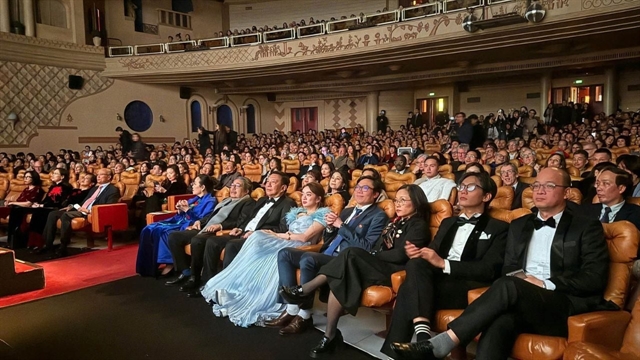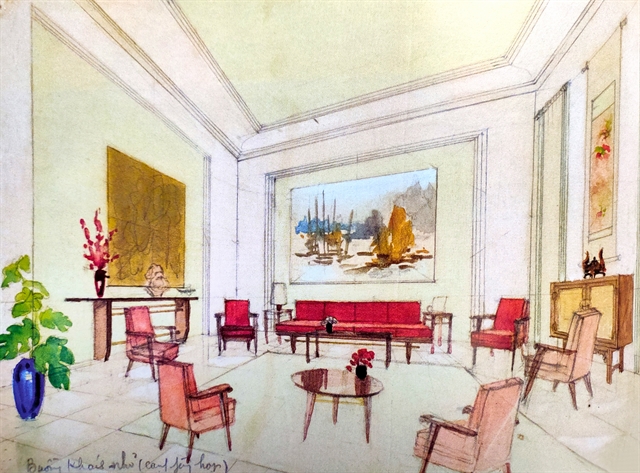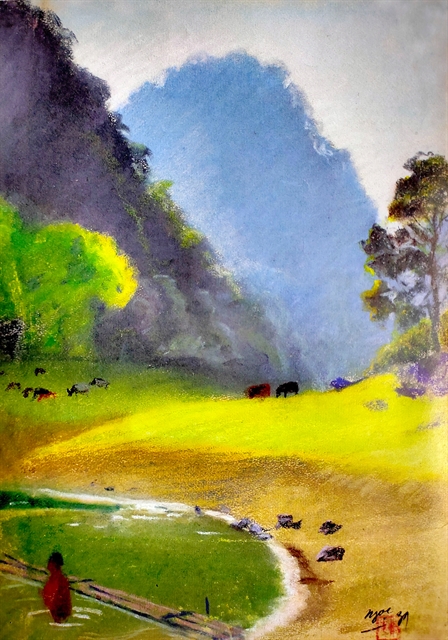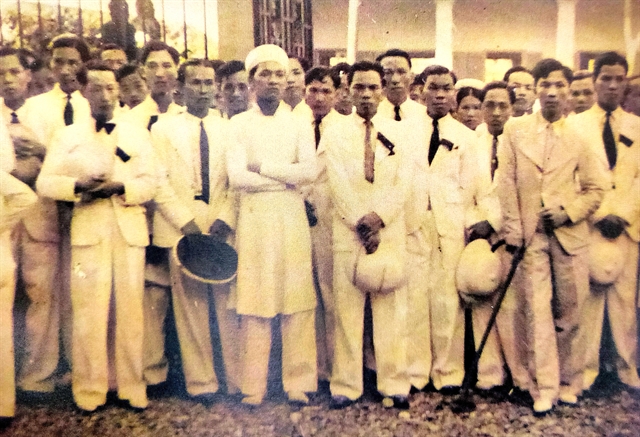 Life & Style
Life & Style

 |
| The small reception hall (next to conference room) furniture and interior were designed by the MÉMO label by Trịnh Hữu Ngọc in the 1960s. Photo courtesy of the book, Trịnh Hữu Ngọc |
HÀ NỘI – Thousands of graduates gathered in Hà Nội to commemorate the 100th anniversary of the then Indochina Fine Arts School, now known as the Việt Nam University of Fine Arts, or simply the Yết Kiêu school after the street where it is located.
Among them were two individuals who did not graduate from the renowned arts school themselves, but whose forefathers founded and taught there a century ago. They also travelled to Hà Nội to pay tribute to their ancestors, joining the celebrations and reflecting on a legacy that has shaped generations of Vietnamese artists.
 |
| Salon 1939, a family friend had successfully auctioned this painting in Paris and handed over to Mr. Trịnh Hữu Ngọc's family, who named it, The Montagnard Beauty, which still bears the frame's house label: M.Egoux, 2 Rue Ph Marcombes, Clermont. Photo courtesy of the book, Trịnh Hữu Ngọc |
Alix Turolla Tardieu, accompanied by two of her sons, is the granddaughter of Victor Tardieu, founder and first director of the then L'École des Beaux-Arts de l'Indochine.
Another visitor was Arnault Fontani, great-grandson of sculptor Everiste Jonchere, the school’s second director.
"I was very touched to have met Madame Alix Turolla Tardieu," writes Trịnh Lữ, himself a painter and writer, on his fanpage.
"She said I was like family, as my father, Trịnh Hữu Ngọc, always regarded Tardieu as his respected father figure since his days studying at the college of fine arts.
"I was even more touched as she gifted me a paintbrush that her grandfather Tardieu brought from France."
 |
| Salon 1939, By a mountain pond, Pastel on Ingres paper (31x24cm) was signed by Trịnh Hữu Ngọc with a red stamp. Photo courtesy from the book, Trịnh Hữu Ngọc |
Today, on November 20, students and former students across Việt Nam celebrate the vital role of their teachers, who not only imparted knowledge but also left a lasting influence on the many lives they helped shape.
"One who teaches you one word is your teacher; even if he teaches you half a word, he is also your teacher," reads a prominent Vietnamese saying with roots in ancient Han Chinese philosophy. It reminds everyone to honour all teachers who guided them from their earliest school days and helped shape who they are today.
Although Việt Nam fought with blood and tears to break free from French colonial rule and the Fine Arts School ceased to exist in its original form in 1954, the same grounds and buildings now host the Việt Nam University of Fine Arts, which continues to train painters according to the academic standards established by the school over a century ago.
 |
| History intact: The MÉMO table, where President Hồ Chí Minh wrote his world-resonant Declaration of Independence, is currently preserved at Hồ Chí Minh Museum, was designed by Trịnh Hữu Ngọc. Photo courtesy of the book Trịnh Hữu Ngọc |
A century ago, the school received applications from students across the three Indochina countries — Việt Nam, Laos and Cambodia — and trained painters, architects and sculptors.
Trịnh Hữu Ngọc, Trịnh Lữ's father, enjoyed a long and varied career that extended beyond painting to design and interior wood furniture, continuing his work well after the old school ceased to operate.
His artistic declaration, the principles he lived by and taught his later students about the true meaning of being an artist was captured in the essence as follows:
"Be a Free Man, then become an Artist
Art is the masterpiece of Labour
Painting – It's a profession
Interior design is for building a way of life
Drawing what we see is a way of Zen for everybody"
 |
| At the Master Tardieu's funeral in Hà Nội on August 26, 1937, Trịnh Hữu Ngọc mourned his master wearing white in traditiona Vietnamese with a white head band, meaning the deceased was alongside with his parents. Photo courtesy of Ngô Kim Khôi |
In 1938, Trịnh Hữu Ngọc graduated from the school’s Lacquer Department. A year later, in 1939, a dozen of his paintings received the Gold Medal in Painting, while the furniture he designed at MÉMO 47 Studio was awarded the Silver Medal in Wood Furniture, as reported by Đông Pháp newspaper on January 30, 1940.
At the school, Trịnh Hữu Ngọc studied under Joseph Inguimberty. According to the book Trịnh Hữu Ngọc, a special legacy of the Franco-IndoChinese Fine Arts by his son Trịnh Lữ:
"When Inguimberty scanned local nature for motifs and used sketches for topical compositions with the sensibility of a foreign teacher of decoration, then Trịnh Hữu Ngọc would paint truly natural compositions of his homeland, with the sensibility of a local open-air painter.
"The teacher’s works are narrative, while the student captured what he saw."
 |
| FAMILY REUNION: Alix Turolla Tardieu, granddaughter of Victor Tardieu, meets Trịnh Lữ, son of Trịnh Hữu Ngọc, on the 100th anniversary of the founding of the Indochina Fine Arts School, where Tardieu served as its first director. Photo courtesy of Trịnh Lữ. |
Both of them painted numerous landscapes of Ba Vì Mountain on the horizon, but their works differ markedly in style and approach.
"Inguimberty's landscapes are obviously dramatic with lots of contrasts, closer to the Post-Impressionists. And Trịnh Hữu Ngọc's landscapes are atmospheric in natural light, closer to the French Impressionists, but much tender and emotional," wrote Trịnh Lữ.
After the nine-year resistance war, Việt Nam's new government under President Hồ Chí Minh ushered in a simpler, more practical lifestyle. Trịnh Hữu Ngọc responded by creating interior designs and furniture suited to this new way of life.
Today’s students continue to learn classic methods and preserve the school’s traditions and signature techniques. It remains the country’s most demanding arts school to enter, with an enormous workload, and its graduates have gone on to become leading artists of Việt Nam. — VNS